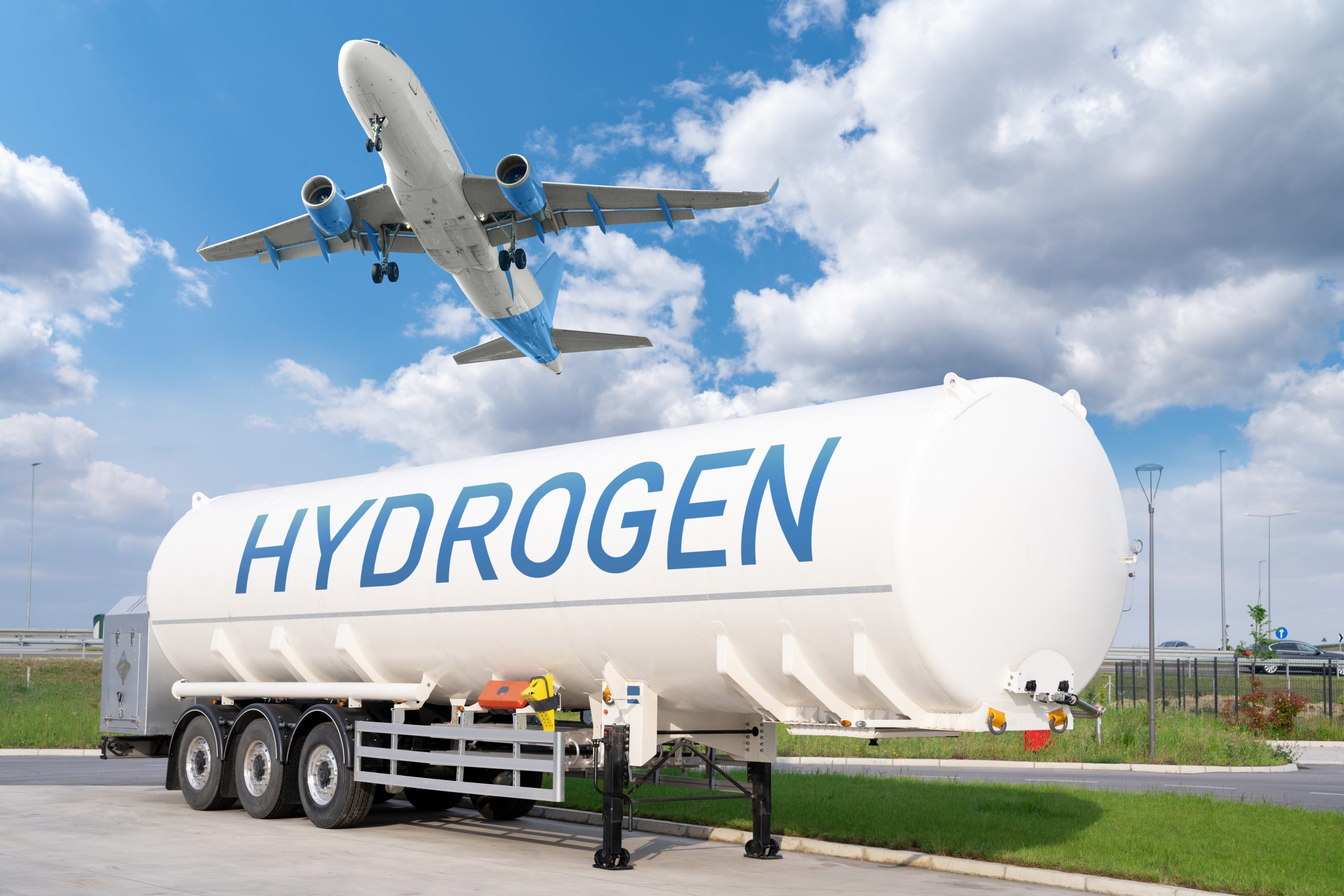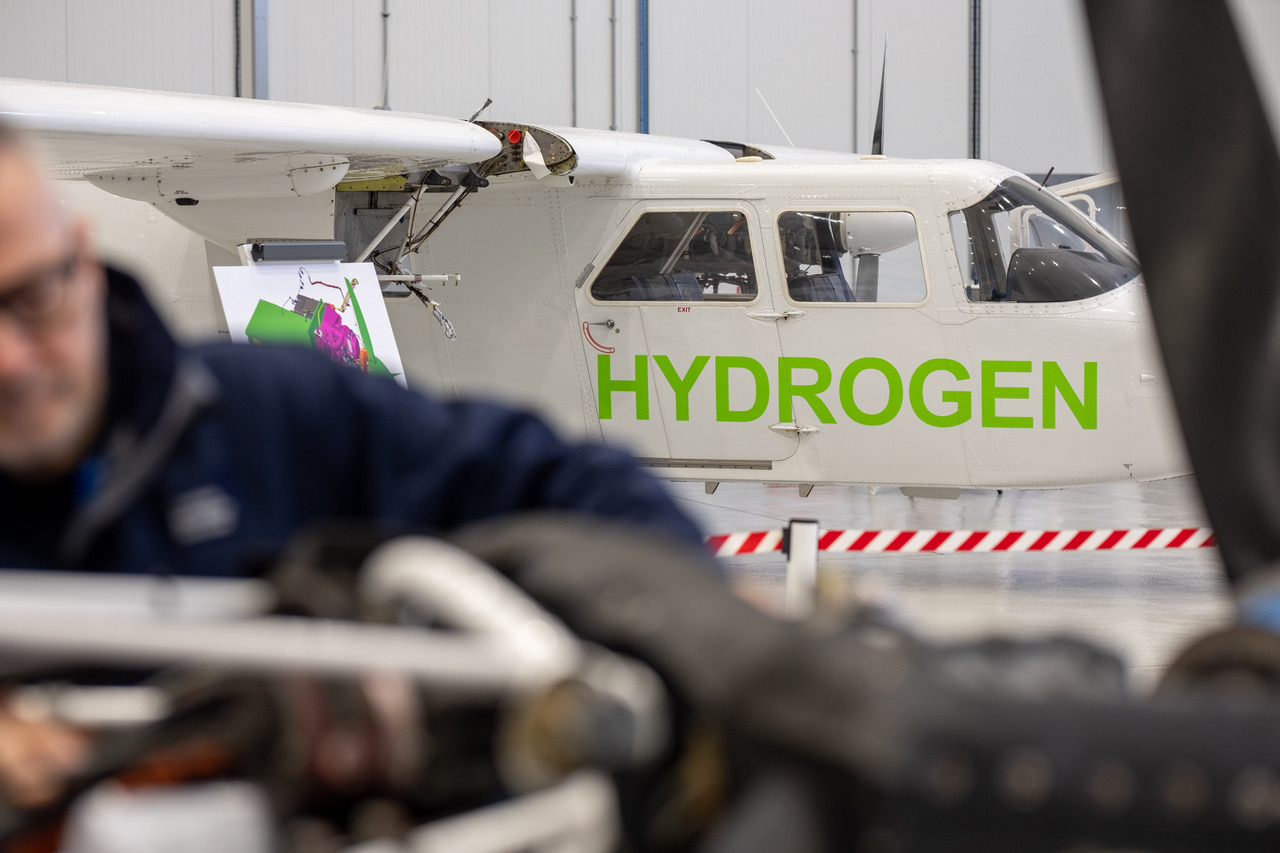Guest Blog by Nuala Doyle, Policy Officer at the SASHA (Skies and Seas Hydrogen-fuels Accelerator) Coalition
For a sector that is both high-polluting and hard-to-electrify, the aviation industry on the whole has been slow off the starting blocks when it comes to decarbonisation.
Moreover, the solutions with the most policy momentum are not the most effective, with alternative fuels like biofuels garnering the most attention. As a result, truly sustainable solutions, which invariably use green hydrogen, get left by the wayside. This lack of policy driving green hydrogen solutions to aviation (and shipping) decarbonisation is precisely the problem that the SASHA Coalition was set up to address.

About the SASHA Coalition
The SASHA Coalition was launched in April 2023 to bring together aviation and shipping companies to advocate for policy to drive green hydrogen decarbonisation solutions. Our members, including Cranfield Aerospace Solutions, are ambitious companies at the frontlines of decarbonising their sectors, and it is thanks to their individual successes and the power of their collective voice as an industry coalition that we’re putting green hydrogen on the desks of key policymakers.
Filling the Green Hydrogen Gap
What is Green Hydrogen and how is it used in Aviation?
Green hydrogen and its derived fuels constitute the only path to truly decarbonising these sectors. For aviation, green hydrogen can be used either as a fuel directly, in hydrogen-electric fuel cells or in synthetic e-fuels, namely e-kerosene. In some shape or form for different flight distances and plane models, green hydrogen is the key to getting the sector to net zero.
But while the tech is promising, we’re not on track to capitalise on it. There’s a Green Hydrogen Gap – a severe lack of green hydrogen policy in EU and UK decarbonisation strategies – meaning we are not on track to meet either jurisdiction’s shipping and aviation decarbonisation goals.
Part of the problem has been distinguishing green hydrogen, the only sustainable form of hydrogen, from other colours. Grey and blue hydrogen are produced from fossil fuels, so while cheaper than green hydrogen, they cannot be considered sustainable given producing them does emit carbon. When hydrogen is produced via electrolysis powered by renewable energy, however, it is a true zero emission solution. Hydrogen aviation will only be green when the hydrogen itself is green.

Biofuels vs Green Hydrogen
A key consequence of the green hydrogen gap is that it has allowed biofuels to take the lead as the industry’s alternative fuel of choice. While biofuels may cost less than green hydrogen, they ultimately do more harm than good. Biofuels are far from the sustainable alternative fuel they are marketed as: they have higher lifecycle emissions than green hydrogen solutions and pose a threat to our biodiversity, for example through the land use incentives they create. Nor are they economically sustainable in the long run due to feedstock constraints. For some, such as used cooking oils, there are also fraud risks associated with a lack of supply chain transparency. While their price today is lower than that of green hydrogen, we cannot rely on biofuels’ long-term cost effectiveness, nor their ability to actually have a positive environmental impact.
The green hydrogen policy we need
How does green hydrogen get the policy attention it needs competing against both conventional fossil fuels and its less-than-green cousins biofuels? In short, how do we fill the Green Hydrogen Gap? This is where SASHA comes in to bring the right policy proposals to the people with the power to put them in place.
Investing in Green Hydrogen production for the sectors that need it to decarbonise
The main problem that needs resolution is the cost difference between green hydrogen and its less sustainable competitors – it’s no secret that low supply means green hydrogen is currently a costly solution. The key first step is for governments to recognise green hydrogen’s indispensable role in aviation’s transition. Furthermore, they must acknowledge that green hydrogen is not a viable solution for industries that can be electrified – such as household heating or road transport – and therefore that the limited quantities of green hydrogen we have should be used in sectors which need it the most. This point of departure leads policy to the logical conclusion that we must invest in green hydrogen production for the select sectors that need it to decarbonise. As production scales up, costs will fall. Public financing will signal a growing market and crowd in private investment.
Setting mandates are crucial to reaching sustainability goals
But public investment alone can only go so far, and here we need more precise policy tools. As other industries have shown us, mandates are crucial to reaching net zero goals globally. The zero-emission vehicle mandate is a key example of such a policy’s application in road transport. For aviation, mandates are key to setting compulsory levels of green hydrogen fuel usage within certain time horizons. In the UK and EU there are already mandates in place for sustainable aviation fuels (SAF), including sub-mandates for green hydrogen-derived fuels, but we need to see their ambition ramped up.

The UK as a zero-emission flight leader
One site of untapped potential is zero emission flights (ZEF). The UK is set to be a global leader in ZEF, with SASHA members Cranfield Aerospace Solutions and ZeroAvia breaking ground in this field. But without policy support this opportunity may pass the country by. Our view: the new UK government needs to bring in a robust policy framework to drive the development and deployment of domestic ZEF. The SAF mandate introduced this year has already sent a clear demand signal to the investment community that there is a strong future market for these fuels – now we need a similar framework for ZEF. This would spurn the value chain with the momentum needed to build a resilient green hydrogen market, subsequently both giving short-haul ZEF the future security to get off the ground.
Policy and regulatory support for ZEF
Policy and regulatory support for ZEF will also be crucial for cementing the UK’s leading role in the development of this sector. We already have a strong aerospace heritage, which ZEF development is only the next chapter in. The Aerospace Technology Institute (ATI) forecasts that investment in new technologies’ development ahead of other nations could see the UK achieving up to 19% of the global aerospace industry and an additional 38,000 jobs by 2050. With industrial growth high on this new government’s agenda, promoting innovation in ZEF will be critical to both cutting aviation’s emissions and driving prosperity.
A ZEF mandate policy framework, by stimulating the green hydrogen economy, would also ameliorate some of the shortcomings of the SAF mandate. The SAF mandate does contain sub-mandates for e-fuels, but they need to be stronger. Power-to-liquid (PtL), or green hydrogen e-fuel, targets are set at only 0.2% of the fuel mix by 2028 and 0.5% by 2030 and 3.5% by 2040. At the same time, biofuel targets are much stronger, sending investment signals that are not aligned with our environmental goals, nor adequately stimulate a green hydrogen market. A ZEF mandate would compensate for the SAF mandate’s shortcomings by boosting the green hydrogen market, thereby additionally helping set us on track to address long-haul flying as well as short haul. Ultimately this is the kick needed to meet our aviation decarbonisation goals.
Conclusion
It is only thanks to our members like Cranfield Aerospace Solutions, for the strength of their voice, the ambition of their projects, and the policy and technical information sharing that the coalition facilitates, that SASHA is able to keep advocating in the strongest terms for these policies that would set us on track to decarbonise aviation and shipping.



